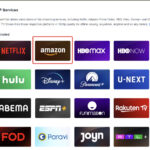Explore the most influential factors that make or break your product rankings on Amazon. Keep reading to find out what they are!
Setting up your business on Amazon is just the first step if you want to make profits from the world’s largest e-commerce platform. To expand the traffic and attract potential customers, you need to double down on the visibility of the listing.
This is when Amazon’s algorithms enter the picture and determine which product deserves the most favorable spots on the search result page. If you are unfamiliar with how your product is ranked on Amazon and what you can do to boost your chances, let’s have a look at the article below!
6 Factors That Determine An Amazon Product Ranking
If you want to achieve Amazon SEO, you need to know a few basic pillars upon which Amazon evaluates each product webpage. Generally speaking, these aspects can be split into two categories, including effectiveness and relevance.
Effectiveness
Conversion rate
Simply put, conversion rate is the percentage of shoppers deciding to buy your products out of the entire traffic. The higher your store’s conversion rate is, the stronger your sales records are. Since Amazon is well aware of this vital statistic, it tends to put stores with a more solid customer base over those with few buyers.
To impress Amazon when it comes to conversion rate, you must first understand where yours lies on the spectrum. Access Seller Center > Reports > Business Reports > Detailed Page Sales > Traffic to get a grasp on how your store has been doing so far.
There, feel free to compare how much your store manages to accrue to the expected figures. On average, an Amazon retailer should be able to get at least 9.5%.
This number can even reach 15% if your store mostly sells low-end, affordable items, since shoppers are much more willing to pay for something that does not cost a fortune.
If your conversion rate is circling around the aforementioned proportion, it is likely that Amazon will pay special attention to your store and do not lower your product ranking. But if your conversion rate is anywhere under 3% or so, expect to fall behind.
Pricing
The price range is arguably among the most influential elements that decide whether the customer wishes to add your product to their shopping cart or not.
If you offer a competitive price tag, you stand a higher chance of drawing in new buyers. However, this should not be mistaken with lowering the cost at the expense of revenue.
Remember, you still have to maintain a reasonable profit margin to generate a consistent flow of income.
Relevance
Imagery
Optimizing the visual assistance on each of your listing products is an important factor that contributes to your ranking. If you fail to comply with Amazon’s guidelines on photos, you are sure to lose myriad customers.
In most cases, Amazon requires sellers to upload high-quality photos with 1000 x 1000 px, thus ensuring that when people zoom in, even the smallest details of your items are well illustrated on the screen.
It will also do you good to include several photos shooting the product from different angles, allowing buyers to have a more comprehensive view. The more attentive you are to your images, the more satisfied customers are when browsing through your listing. Subsequently, they are more inclined to seal the deal.
Headtitle
The title of your product page is the first thing that strikes the eyes of customers. Furthermore, Amazon takes headtitles seriously and scans through them rigorously to ensure that your product lives up to the requirements.
Hence, this is where you must put in the primary keywords that shoppers will inevitably look for when they want to buy something. These include the name of your product, the manufacturers, model version, color, material, size, capacity, etc. If there is still space left, you can even add in a few descriptive adjectives that make your items stand out.
Still, it is worth remembering that Amazon does not enjoy keyword-stuffed titles. You do not have to fill 250 given characters, just enough to sketch out the unique selling points of your products.
Description
The description section of your listing provides a great space to inform customers in detail about what they are looking at. But many sellers make the mistake of writing lengthy sentences or walls of texts that come out as off-putting.
Thus, make sure that your content is concise and readable, preferably in bullet points so potential buyers can simply skim through within minutes. It is also highly recommended that you group characteristics of the same category together, making it more organized for the target audience.
Keywords
Picking up the right keywords for Amazon bidding can substantially raise your visibility. Therefore, it is essential that you kick off auditing the product listing with insightful keyword research. Below are a few suggestions on how to lay your hands on the most effective terms.
- Use Amazon autocomplete: Whenever you type in a particular phrase on the Amazon search bar, the engine will provide several options that you might want to have a look at.
For example, “bedsheet” will be accompanied by “bedsheet sheets queen set” or “bedsheet holding clips.” These give you a rough idea of what customers usually look for concerning a specific product so that you can take advantage of them later in your SEO.
- Use third-party websites: There are multiple browsers with exhaustive records of Amazon’s most and least popular keywords, coupled with their frequency, volume, and performance. Digging through them would let you know which keywords to go for and which keywords to avoid.
Conclusion
Earning a higher rank for your Amazon products is not an easy task. But with the help from professional digital marketers, things can get much more effortless even if you are new to the platform. If you are interested in learning more about Amazon selling practices, have a look at this website and see what it has to offer!




